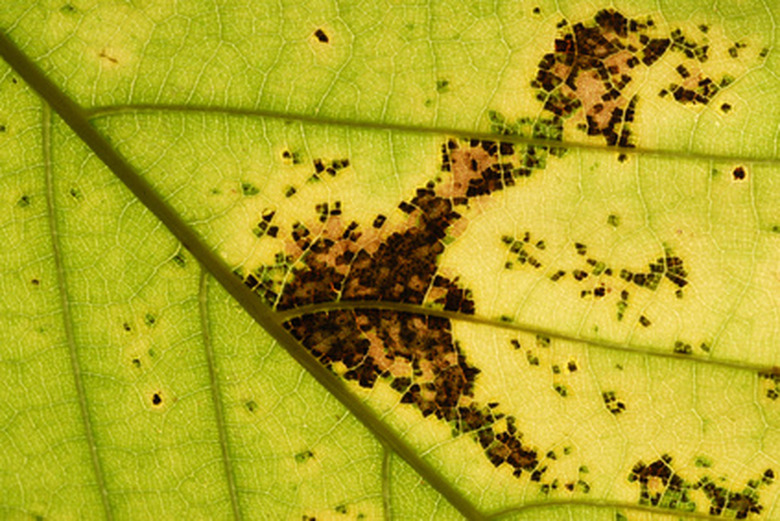How To Treat Leaf Spot On Coral Bells
Coral bells are attractive evergreen perennial flowers. Their heart-shaped leaves and tall, bell-shaped blossoms add character to a landscape or flower garden. That is, of course, unless they are covered in unattractive leaf spot. Leaf spot is a common plant disease, but largely only affects coral bells that are growing under inadequate conditions. The only way to treat leaf spot is to remove the affected foliage. However, the best long-term treatment is to change your coral bells' growing conditions to make sure they have nutritious soil to help them resist disease.
Step 1
Be sure to correctly identify leaf spot as the culprit. There are many plant diseases that mar the leaves of coral bells. Classic symptoms of leaf spot are reddish-brown spots with or without yellow halos.
- Coral bells are attractive evergreen perennial flowers.
- Leaf spot is a common plant disease, but largely only affects coral bells that are growing under inadequate conditions.
Step 2
Remove all of the affected foliage and any leaf litter at the base of your coral bells. The leaves can simply be pinched off, at their base, by hand. Bag all the pruned material and throw it away. Do not compost it.
Step 3
Prevent re-infection by working carefully around your coral bells, especially when they are wet. The bacteria that cause leaf spot can only enter the plant through cuts or bruises caused by rough handling.
Step 4
Spread a 2-inch layer of leaf mulch over the planting area. Coral bells grow best in moist, nutritious soil. The mulch will help to keep the soil moist and, as it decays, it will provide the coral bells with essential nutrients.
- Remove all of the affected foliage and any leaf litter at the base of your coral bells.
- Prevent re-infection by working carefully around your coral bells, especially when they are wet.
Coral Bells
Most garden perennials, such as the rose, iris and daisy, are beloved for their flowers — once done blooming, their foliage is little noticed. They even perform well when planted in tubs or containers. The rounded form of the coral bells plant makes it an ideal foil for vertical perennials such as coreopsis or dianthus. Specific colors of coral bell foliage enhance the colors of other plants' flowers. Cultivars particularly attractive to hummingbirds include those with the most brilliant red blooms, such as "Firefly," "Splendens," "Ruby Bells" and "Fireworks."
